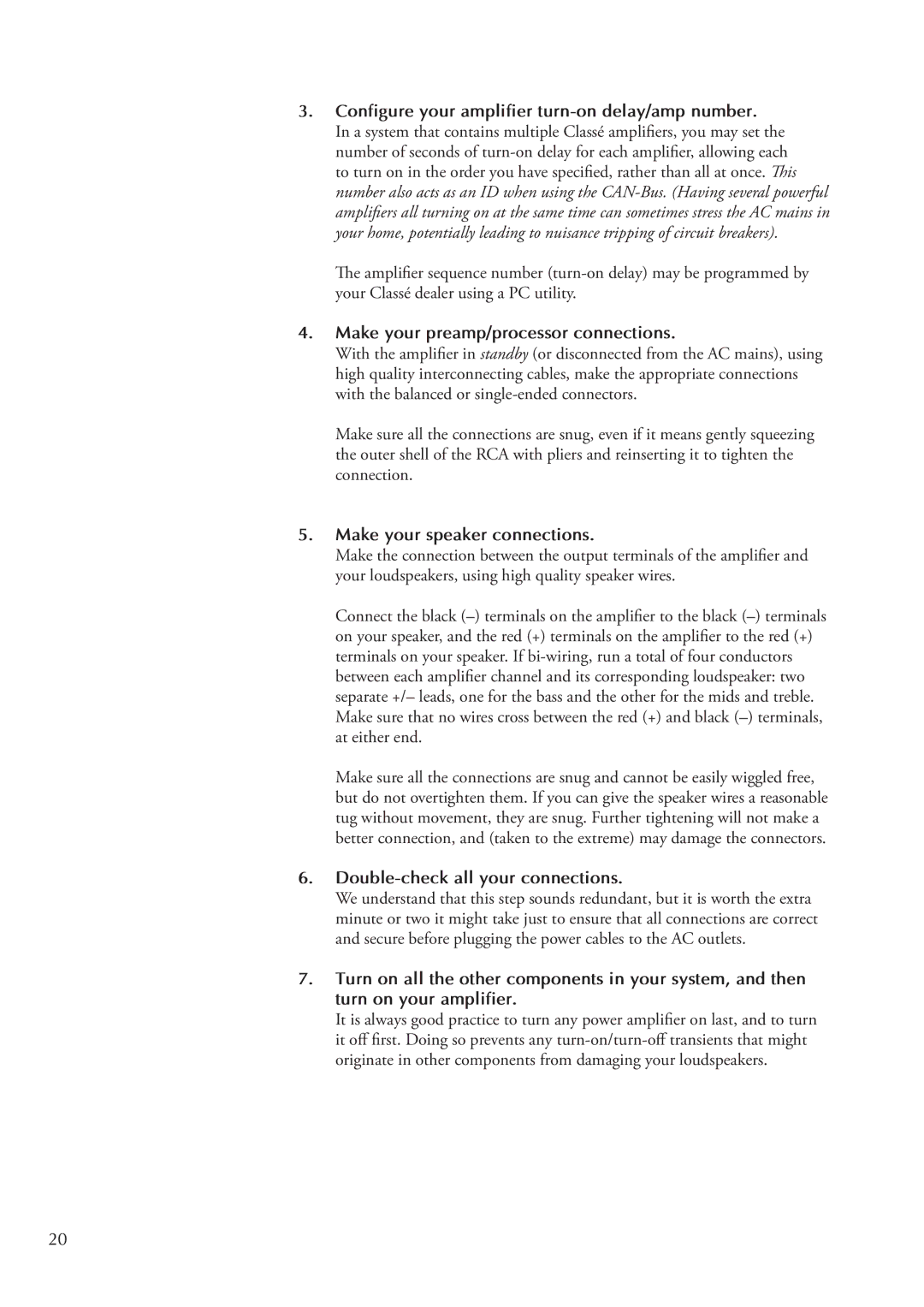20
3.Configure your amplifier turn-on delay/amp number.
In a system that contains multiple Classé amplifiers, you may set the number of seconds of
The amplifier sequence number
4.Make your preamp/processor connections.
With the amplifier in standby (or disconnected from the AC mains), using high quality interconnecting cables, make the appropriate connections with the balanced or
Make sure all the connections are snug, even if it means gently squeezing the outer shell of the RCA with pliers and reinserting it to tighten the connection.
5.Make your speaker connections.
Make the connection between the output terminals of the amplifier and your loudspeakers, using high quality speaker wires.
Connect the black
Make sure all the connections are snug and cannot be easily wiggled free, but do not overtighten them. If you can give the speaker wires a reasonable tug without movement, they are snug. Further tightening will not make a better connection, and (taken to the extreme) may damage the connectors.
6.Double-check all your connections.
We understand that this step sounds redundant, but it is worth the extra minute or two it might take just to ensure that all connections are correct and secure before plugging the power cables to the AC outlets.
7.Turn on all the other components in your system, and then turn on your amplifier.
It is always good practice to turn any power amplifier on last, and to turn
it off first. Doing so prevents any
